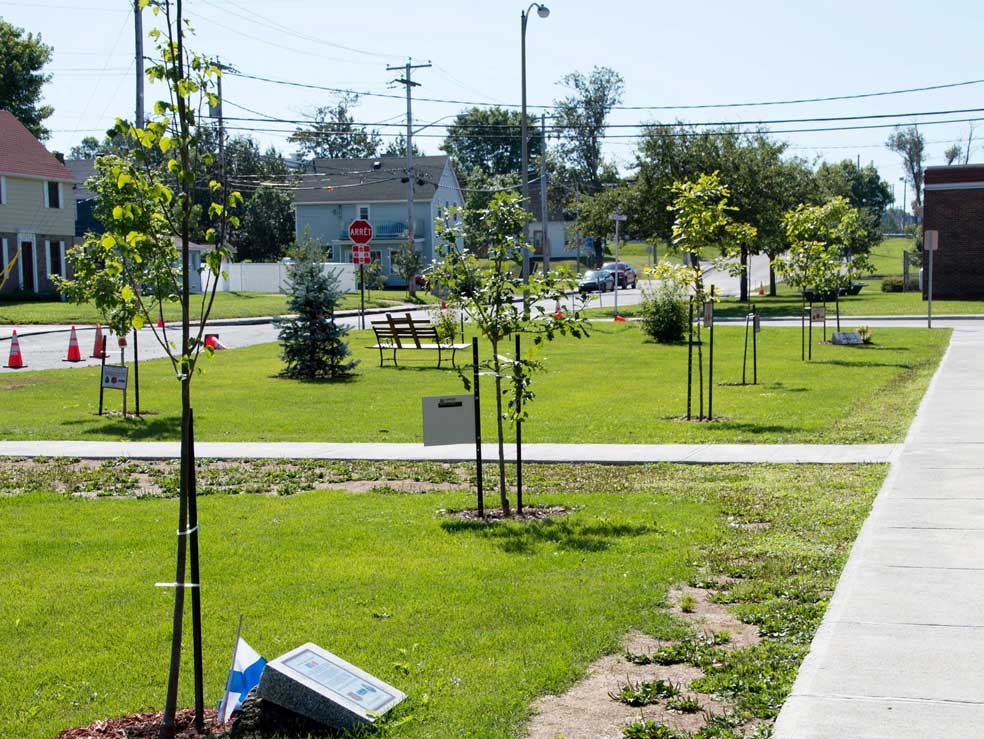The ongoing protection and presentation of Arvida’s heritage values
The residents of Arvida have been guarding the town’s memory and heritage for almost a century. Before and after the Second World War, the aluminum company implemented innovative measures to ensure the preservation of Arvida’s landscapes, notably by creating an urban planning committee to support the municipal administration. Concurrently, the residents of the model town, bearers of its pride and identity, took initiative ensuring its conservation. As early as the 1920s, they could become homeowners; the company made their tenure subject to a set of heritage easements, true avant-garde urban planning regulations, to which the citizen-owner, often plant workers and employees, dutifully committed to the conservation of the beloved landscape. Thus, Arvida appears to be a true heritage project from the start.
The strong identity the company wanted to create through its contribution to social and cultural life, never failed, and grew in pace with the reputation of the model town, nicknamed “The Washington of the North” in the 1920s, in reference to its destiny to become one of the great metropolis. The city that for thirty years held its position as the aluminum leader of the Western world, sent its workers and children across the world to be educated in acclaimed schools across Canada, lost memories only briefly, in the wake of the 1975 municipal merger that took away its territorial control and its name. Nowadays, as industry becomes a heritage, Arvida stands out as a cultural legacy through exceptional social and urban planning, with its unique environment within the history of company towns, its industrial infrastructures that marked the course of the 20th century, but also due to its integrity and authenticity, the work of generations of citizens of Arvida.
Why does Arvida wish to become a UNESCO heritage site? To ensure the most comprehensive transmission possible, based on the local, regional and national recognition of its contribution to the history of humankind, as well as community life, territories and memories that shape humanity and show the tremendous contribution resulting from the coexistence of earth and mankind.
In 1956, the great urban planning historian, Pierre Lavedan described Arvida as a “factory town” and a “city of aluminum”, noticing the “free flowing design”; the German planner Werner Hegemann was already praising the city during the time between the two World Wars. Over the years, it has positioned itself on the global scene among the cities and industries of the 20th century, whose heritage we are contemplating today. And so, Arvida now claims to belong to that world.





 Official City of Saguenay website
Official City of Saguenay website